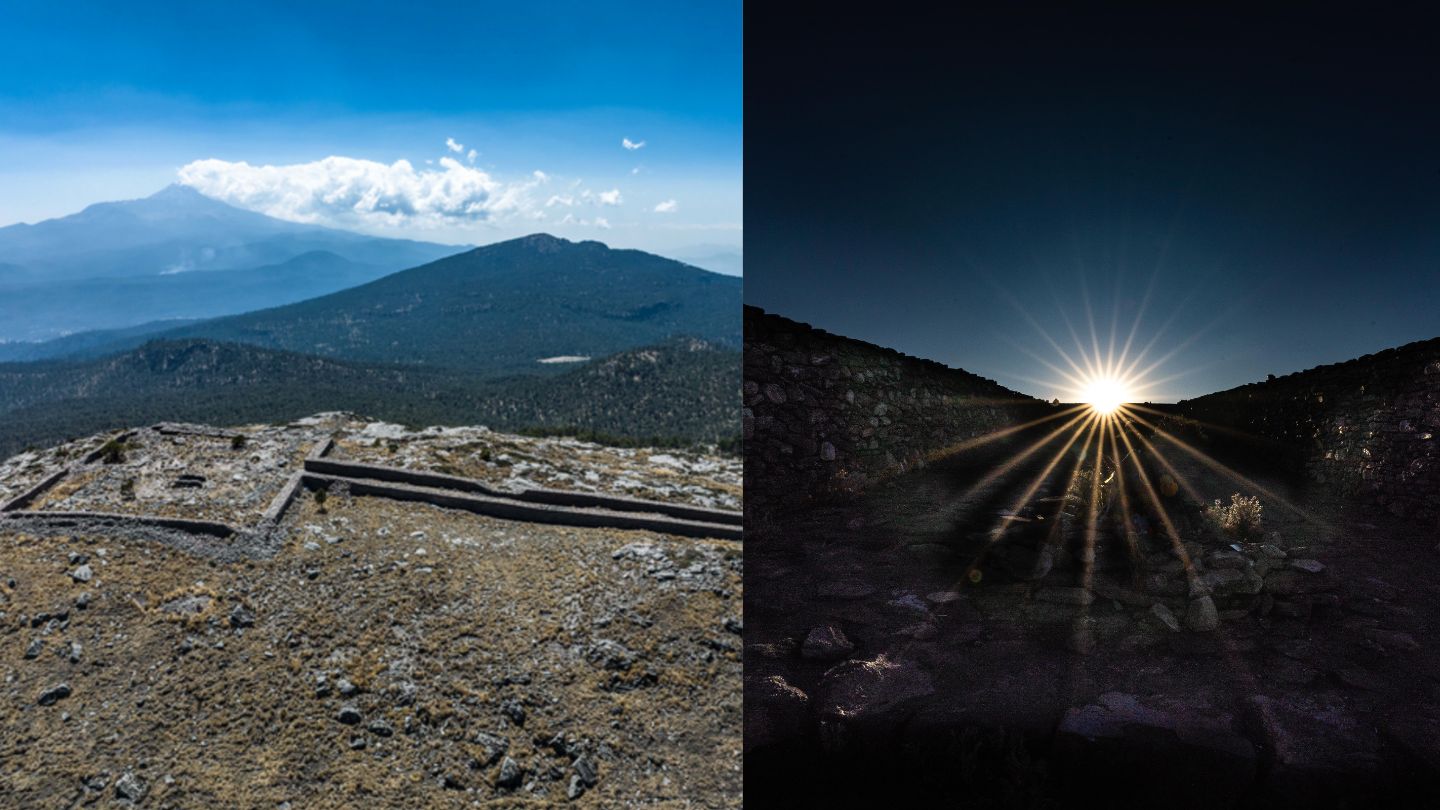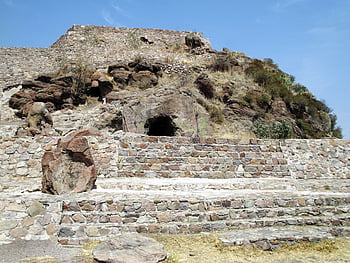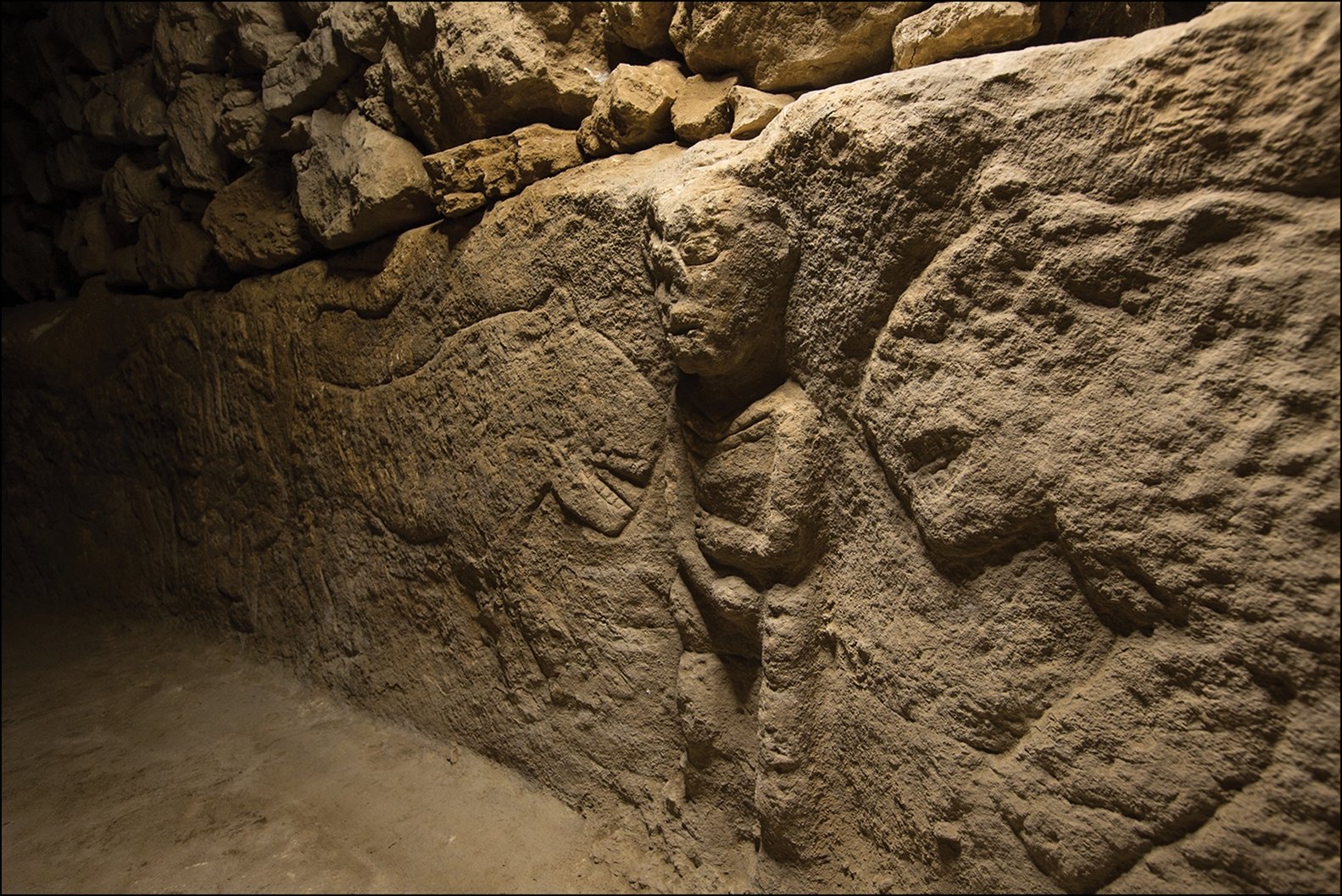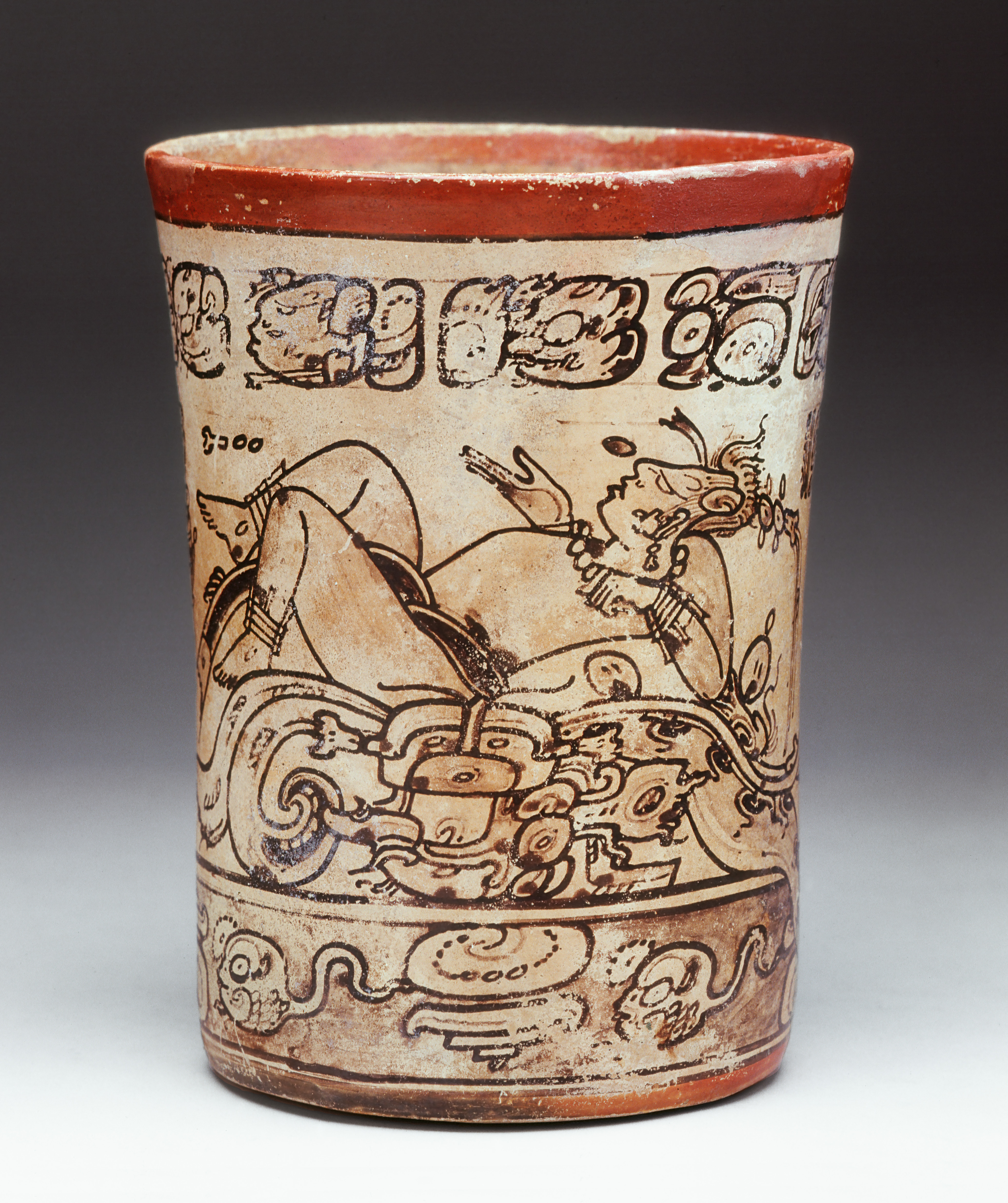Judi Lynn
Judi Lynn's JournalEnvironmentalists sue Interior Department in push to save critically endangered porpoise
The vaquita is on the brink of extinction as a consequence of Mexican fishermen ensnaring them while illegally catching fish whose bladders are an expensive delicacy in China.
CAMERON LANGFORD / December 14, 2022

A pair of critically endangered vaquita porpoises swim in the Gulf of California in 2018. (Oscar Ortiz/Museo de la Ballena y Ciencias del Mar via AP)
(CN) — Environmental groups sued the Interior Department on Wednesday seeking sanctions against Mexico for failing to crack down on illegal fishing imperiling vaquita porpoises, whose population in the Gulf of California has declined from around 600 in the late 1990s to just 10.
The world’s most critically endangered marine mammal and smallest porpoise, reaching lengths of about 5 feet, vaquita are endemic to Mexico’s Gulf of California, also called the Sea of Cortez, and named after the Spanish word for little cow.
Their status is a consequence of a large fish that shares their habitat, the totoaba.
Part of the drum family, the totoaba's swim bladders are considered a delicacy in China with medicinal properties that can increase fertility and circulation and treat skin problems. They fetch eye-popping prices of up to $100,000 per kilogram.
Though Mexico made it illegal to catch totoaba in 1975 by placing the fish on its endangered species list, the practice continues and has picked up over the last decade with demand from China.
More:
https://www.courthousenews.com/environmentalists-sue-interior-department-in-push-to-save-critically-endangered-porpoise/
Scientists Discover Mountain Is Really an Ancient Cosmic Observatory
Mount Tlaloc and its ruins are “an observatory that aligns with the rising sun on one day of the year," which is the beginning of the Aztec new year.
HD
By Hannah Docter-Loeb
December 12, 2022, 2:00pm

IMAGES: EZCURRA ET. AL.
Exequiel Ezcurra is no archaeologist. He’s an ecologist and conservationist, currently investigating the origin and evolution of corn agriculture in Mexico. But while exploring past farming techniques, he discovered something else: early inhabitants of the Basin of Mexico utilized ruins on a nearby mountain to keep an accurate agricultural calendar. Ezcurra published these findings with two other collaborators—his daughter and a friend who took drone footage—on Monday in Proceedings of the National Academies of Sciences (PNAS).
Prior to Spanish conquest, the people of the Basin of Mexico had a very impressive farming system. Monsoon season comes in the summer, but false rains earlier in the year may have tempted farmers to plant their crops prematurely, dooming them. But that didn't happen, indicating calendrical knowledge. As Ezcurra explains, this was especially noteworthy, given that they didn’t have any of the navigational and observational instruments that the Europeans had at the time, such as compasses, astrolabes, and quadrants.
“My initial motivation was to find out how this all started and how these guys came up with these highly productive agricultural systems so early in human history,” he said.
The answer, he believed, lied in the mountains. Many other civilizations have demonstrated “horizon calendars,” which note the position of the rising (or setting) sun against geographical features along the horizon. Ezcurra and colleagues began to investigate different horizontal landmarks, cross referencing them with ancient codices to see if there were any references. It was through this process that they decided to focus on Mount Tlaloc, a likely candidate because of its proximity to the east.
More:
https://www.vice.com/en/article/93aj85/scientists-discover-mountain-is-really-an-ancient-cosmic-observatory



One of the lesser-known but equally picturesque volcanoes in Mexico is Mount Tláloc, which has at its top one of the most important ceremonial centers dedicated to the god of rain.
Mount Tlaloc is a volcano located in the Central Volcanic Belt Transversal, nestled between the towns of Ixtapaluca and Texcoco in the State of Mexico. It occupies the number nine of the highest mountains in Mexico, with a height of 4,120 meters above sea level. However, what really makes Mount Tláloc stand out is not its geographical features, but its enormous historical and archaeological importance. His name already gives us a clue: it is not gratuitous that he was baptized in this way; it had a very significant religious and ritual connotation in the times of Mexico-Tenochtitlán.
In this place, there is a phenomenon known as the ” Ghost Mountain ” that surprises the citizens of the Valley of Mexico near the area of volcanoes and mountains, because, between February 7 and 12, the sun aligns itself between the Pico de Orizaba, La Malinche and Monte Tláloc, and a huge shadow forms on the other side of the mountain that covers the region and the illusion of forming a super mountain.
At the top of the volcano was found a huge ceremonial center covering about 4,600 square meters (the largest in the world built on a mountain), entirely dedicated to the god of thunder, rain, and maintenance. This monumental temple was erected by one of the most powerful civilizations in Mesoamerica: the Triple Alliance made up of Tenochtitlán, Texcoco and Tlacopan. Such devotion was due to the fact that a large number of springs and rivers flowed from Mount Tláloc, which provided (and continue to provide) water to the villages of the valley.
Up to 176 sites with archaeological evidence have been registered in its vicinity, which shows the incredible respect and veneration that the pre-Hispanic inhabitants had for the volcano. Inside and around these sites, a large number of petroglyphs stand out, carved in the shape of aquatic animals or amphibians, such as snakes, turtles, lizards, and frogs, all representative symbols of the cult of the vital liquid. Its function was to honor the deity who fostered good harvests and a harmonious relationship with nature.
More:
https://mexicodailypost.com/2021/02/26/mount-tlaloc-the-ghost-mountain-and-a-temple-in-the-heights-of-the-valley-of-mexico/
Oldest scene in world: 11,000-year-old wall relief near Gbeklitepe
BY DAILY SABAH
ISTANBUL DEC 12, 2022 - 12:29 PM GMT+3

A male figure is situated between two leopards on the Sayburç relief, in the northern part of the village of Sayburç, in Şanlıurfa, Türkiye. (Photo from the journal Antiquity)
A mosaic panel is pictured in al-Rastan city, Syria, Oct.12, 2022. (Reuters Photo)
An 11,000-year-old wall relief, located near Şanlıurfa's famous Göbeklitepe in southeastern Türkiye, constitutes the earliest known depiction of a narrative "scene" and reflects the complex relationship between humans, the natural world and the animal life that surrounded them during the transition to a sedentary lifestyle, new research revealed recently.
The ancient wall carving depicts five figures: Two humans, a bull and two leopards.
Eylem Özdoğan, the author of the study published in the scientific journal Antiquity, stated that there is very little information about the civilization that made this relief.
"The communities living in this region share a common cultural environment. They certainly communicate with each other and share innovations, social ideology and a common culture," Özdoğan, an archaeologist at Istanbul University, said in a statement to Gizmodo.

A communal building, in northern part of village of Sayburç, in Şanlıurfa, Türkiye. (Photo from the journal Antiquity)
According to the news of Independent Turkish, radiocarbon dating studies of samples taken from the region continue, but researchers believe that these reliefs were made around 9,000 B.C.
More:
https://www.dailysabah.com/life/history/oldest-scene-in-world-11000-year-old-wall-relief-near-gobeklitepe
A Milanese friar mentions North America in 1345 text, 150 years before Columbus
It's the first written evidence that proves someone outside northern Europe had heard of America before Columbus's 1492 voyage.
Tibi Puiu by Tibi Puiu December 13, 2022
Despite pervasive myths, Cristopher Columbus was not the first European to discover and explore North America. We know from the Sagas of Icelanders, confirmed by archaeological evidence, that Vikings traveled from Scandinavia to Newfoundland via Greenland from around 999 AD. Some more informed Europeans, including perhaps Columbus himself, weren’t oblivious to this fact.
In a new study, Paolo Chiesa of the department of literary studies at the University of Milan has documented the first written mention of America in the Mediterranean area. The researcher was stunned to come across a reference to a “terra que dicitur Marckalada,” found west from Greenland, in the work called Cronica universalis written by the Milanese friar Galvaneus Flamma in 1345.
“Galvaneus’s reference, probably derived by oral sources heard in Genoa, is the first mention of the American continent in the Mediterranean region, and gives evidence of the circulation (out of the Nordic area and 150 years before Columbus) of narratives about lands beyond Greenland,” Chiesa wrote in the study published in the Journal of the Society for the History of Discoveries.
Marckalada refers to Markland, the name Icelandic sources give to a part of the Atlantic coast of North America. The mention of Markland occurs in the third book, which discusses the third age of humankind from Abraham to David. At one point, the Middle Age author “inserts a long geographical excursus, mainly dealing with exotic areas: the Far East, Arctic lands, Oceanic islands, Africa,” Chiesa says.
In his texts, the Milanese friar employs a variety of sources, ranging from biblical to scholarly treatises, including the accounts of travelers the likes of Marco Polo and Odoric of Pordenone. Galvaneus ascribed his description of Markland to the oral testimony of sailors who traveled the seas of Denmark and Norway, which was most likely passed down to the friar by seafarers in Genoa. The port of Genoa was the nearest to Milan and was the city where the medieval scholar studied for his doctorate.
More:
https://www.zmescience.com/science/history-science/a-milanese-friar-mentions-north-america-in-1345-text-150-years-before-columbus/
Peru's ex-president faced bigotry for impoverished past
BY REGINA GARCIA CANO ASSOCIATED PRESS
UPDATED DECEMBER 10, 2022 9:42 PM
LIMA, PERU When Pedro Castillo won Peru’s presidency last year, it was celebrated as a victory by the country’s poor — the peasants and Indigenous people who live deep in the Andes and whose struggles had long been ignored.
His supporters hoped Castillo, a populist outsider of humble roots, would redress their plight — or at least end their invisibility.
But during 17 months in office before being ousted and detained Wednesday, supporters instead saw Castillo face the racism and discrimination they often experience. He was mocked for wearing a traditional hat and poncho, ridiculed for his accent and criticized for incorporating Indigenous ceremonies into official events.
Protests against Castillo’s government featured a donkey — a symbol of ignorance in Latin America — with a hat similar to his. The attacks were endless, so much so that observers from the Organization of American States documented it during a recent mission to the deeply unequal and divided country.
Read more at: https://www.charlotteobserver.com/news/nation-world/world/article269841157.html#storylink=cpy
What the world can learn from Brazil's shifting stance on science

December 11, 2022
In 2010, Brazil’s economy was booming, students were entering higher education institutions at unprecedented rates, and quality research output was soaring.
At the time, I was visiting the country as a physics Ph.D. student, and I was struck by the enthusiastic optimism of the Brazilian researchers I met. Backed by increased government investment in science, they felt they were part of Brazil’s long-term transformation into a scientific and technological powerhouse, and a budding international hub of innovation.
Times have certainly changed.
Brazilians recently voted out far-right President Jair Bolsonaro, who was elected in 2018 and whose administration spearheaded many of the cuts to scientific funding, in favor of Luiz Inácio “Lula” da Silva, who previously served as president between 2003 and 2010. Lula’s election has restored some cautious optimism to the scientific community in Brazil, who hope that, despite challenging economic circumstances and sociopolitical obstacles, he will reinvest in science.
Whether that happens remains to be seen. But Brazil offers other countries a case study on why scientific investment matters — and the consequences when it’s deprioritized.
Before 2014, Brazil was investing heavily in education, research, technology, and innovation that touched all levels of society. Social programs incentivized poorer families to educate their children while state-funded programs offered students hundreds of thousands of new scholarships for private higher education institutions. The public university system was also broadened to less developed parts of Brazil, with 16 new federal universities established between 2003 and 2014. A pursuit of higher education and a scientific career in Brazil seemed more accessible than ever before.
The investment appeared to be paying off. Research and innovation across the scientific spectrum expanded, while a new crop of young Brazilians trained to advance science, technology, and environmental protection. Public-private partnerships fostered large fundamental research endeavors like the Sirius Synchrotron particle accelerator, and a real-time satellite monitoring system was curbing deforestation in the Amazon.
More:
https://thenationonlineng.net/what-the-world-can-learn-from-brazils-shifting-stance-on-science/
Peru's Oligarchy Overthrows President Castillo - OpEd
December 9, 2022 Eurasia Review
By Manolo De Los Santos
June 6, 2021, was a day which shocked many in Peru’s oligarchy. Pedro Castillo Terrones, a rural schoolteacher who had never before been elected to office, won the second round of the presidential election with just over 50.13% of the vote. More than 8.8 million people voted for Castillo’s program of profound social reforms and the promise of a new constitution against the far-right’s candidate, Keiko Fujimori. In a dramatic turn of events, the historical agenda of neoliberalism and repression, passed down by former Peruvian dictator Alberto Fujimori to his daughter Keiko, was rejected at the polls.
From that day on, still in disbelief, the Peruvian oligarchy declared war on Castillo. They made the next 18 months for the new president a period of great hostility as they sought to destabilize his government with a multi-pronged attack that included significant use of lawfare. With a call to “throw out communism,” plans were made by the oligarchy’s leading business group, the National Society of Industries, to make the country ungovernable under Castillo.
In October 2021, recordings were released that revealed that since June 2021, this group of industrialists, along with other members of Peru’s elite and leaders of the right-wing opposition parties, had been planning a series of actions including financing protests and strikes. Groups of former military personnel, allied with far-right politicians like Fujimori, began to openly call for the violent overthrow of Castillo, threatening government officials and left-leaning journalists.
The right-wing in Congress also joined in these plans and attempted to impeach Castillo on two occasions during his first year in office. “Since my inauguration as president, the political sector has not accepted the electoral victory that the Peruvian people gave us,” Castillo said in March 2022. “I understand the power of Congress to exercise oversight and political control, however, these mechanisms cannot be exercised by mediating the abuse of the right, proscribed in the constitution, ignoring the popular will expressed at the polls,” he stressed. It turns out that several of these lawmakers, with support from a right-wing German foundation, had also been meeting regarding how to modify the constitution to quickly remove Castillo from office.
The oligarchic rulers of Peru could never accept that a rural schoolteacher and peasant leader could be brought into office by millions of poor, Black, and Indigenous people who saw their hope for a better future in Castillo. However, in the face of these attacks, Castillo became more and more distanced from his political base. Castillo formed four different cabinets to appease the business sectors, each time conceding to right-wing demands to remove leftist ministers who challenged the status quo. He broke with his party Peru Libre when openly challenged by its leaders. He sought help from the already discredited Organization of American States in looking for political solutions instead of mobilizing the country’s major peasant and Indigenous movements. By the end, Castillo was fighting alone, without support from the masses or the Peruvian left parties.
The final crisis for Castillo broke out on December 7, 2022. Weakened by months of corruption allegations, left infighting, and multiple attempts to criminalize him, Castillo was finally overthrown and imprisoned. He was replaced by his vice president, Dina Boluarte, who was sworn in after Congress impeached Castillo with 101 votes in favor, six against, and ten abstentions.
The vote came hours after he announced on television to the country that Castillo was dissolving Congress. He did so preemptively, three hours before the start of the congressional session in which a motion to dismiss him for “permanent moral incapacity” was to be debated and voted on due to allegations of corruption that are under investigation. Castillo also announced the start of an “exceptional emergency government” and the convening of a Constituent Assembly within nine months. He said that until the Constituent Assembly was installed, he would rule by decree. In his last message as president, he also decreed a curfew to begin at 10 o’clock that night. The curfew, as well as his other measures, was never applied. Hours later, Castillo was overthrown.
More:
https://www.eurasiareview.com/09122022-perus-oligarchy-overthrows-president-castillo-oped/[[
The End of (Illegal) Marijuana: What It Means for Criminal Dynamics in Mexico
MARIJUANA
/ 6 DEC 2022
Marijuana has long been one of the most profitable illicit crops in various parts of rural Mexico, and one of the most important revenue generators for Mexican drug trafficking organizations. It is intimately linked to the origins of these criminal groups, who became the leading suppliers of a lucrative marijuana market in the United States. The trade also became a focal point of an often-tense bilateral relationship between the United States and Mexico.
That era appears to be over. Today, most of the marijuana consumed in the United States is produced domestically, largely due to ongoing legalization and decriminalization efforts in several states. These shifts have changed the game in the international drug market, particularly in the Western Hemisphere. They struck at the core of some of the region’s most notorious organized crime groups and gouged Mexican marijuana prices. Beyond those economic issues, the changes may have permanently altered the once-symbiotic relationship between the criminal groups and their long-time social base.
At the same time, marijuana has become far less of a priority for law enforcement on both sides of the border. Today, authorities are increasingly focused on the trafficking of synthetic drugs, which are rapidly replacing plant-based drugs. Marijuana seizures in Mexico and at the US-Mexico border have steadily declined over the past decade, and the Mexican army is eradicating fewer marijuana plantations every year.
This report aims to analyze what this means on the ground for Mexican organized crime groups and illustrate how they have adapted to these changes. It paints a picture of how criminal governance and the relationship with traditional farming communities has evolved and highlights strategies that large drug trafficking organizations may use to address the market shifts.
More:
https://insightcrime.org/investigations/executive-summary-major-findings/
Ex-Miami US Rep. David Rivera arrested in Venezuela probe
Source: Associated Press
By JOSHUA GOODMAN and TERRY SPENCER
39 minutes ago
Joshua Goodman
Latin America correspondent based in Miami
APJoshGoodman
[email protected]
WASHINGTON (AP) — A former Miami congressman who signed a $50 million consulting contract with Venezuela’s socialist government was arrested Monday on charges of money laundering and representing a foreign government without registering.
David Rivera, a Republican who has been marred by scandals stretching back to his days in Congress from 2011 to 2013, was arrested at Atlanta’s airport, according to the U.S. Attorney’s Office in Miami.
The eight-count indictment alleges Rivera at the start of the Trump administration was part of a conspiracy to lobby on behalf of Venezuela to lower tensions with the U.S., resolve a legal dispute with a U.S. oil company and end U.S. sanctions against the South American nation — all without registering as a foreign agent.
The indictment cites meetings in Washington, New York and Dallas that Rivera either attended or tried to set up for allies of President Nicolas Maduro with U.S. lawmakers and a top aide to former President Donald Trump. To hide the sensitive nature of his work, prosecutors allege Rivera referred to Maduro in chat messages as the “bus driver,” a congressman as “Sombrero” and millions of dollars as “melons.”
Read more: https://apnews.com/article/venezuela-miami-arrests-criminal-investigations-david-rivera-a81683364212d7c86068839290bd8630

David Rivera

MARCH 28, 2022 5:35 AM
Ex-Congressman David Rivera loses ‘last-ditch’ move to avoid $456,000 campaign fine
By Francisco Alvarado, FloridaBulldog.org
In a severe rebuke of David Rivera, U.S. District Judge Marcia Cooke rejected the former Miami Republican congressman’s “last-ditch effort” to dodge a $456,000 judgment against him tied to his decade-old federal elections campaign violations.
On March 24, roughly a year after ruling in favor of the Federal Elections Commission, Cooke denied Rivera’s motion to dismiss the elections watchdog agency’s lawsuit against him on the grounds that he never received mail notices he was going to be sued, and that a five-year statute of limitations had expired when the complaint was filed on July 14, 2017.
“It is disingenuous and smacks of hypocrisy that Defendant David Rivera – a former U.S. Congressman – now insists that the Court conveniently ignore his multiple discrete violations of a federal law in favor of his strained reading of a statute of limitations and his interpretation of the FEC’s claims against him,” Cooke wrote in her denial order. “Defendant’s argument also lacks legal support.”
Cooke also described Rivera’s motion, filed on March 31, 2021, as “what appears to be a last-ditch effort to avoid a final judgment being entered against him.” The judge admonished Rivera for “his attempts to subvert justice and avoid the repercussions of his unlawful acts throughout the underlying FEC administrative proceeding and the proceedings before this court.”
The FEC case is now administratively closed and Rivera is on the hook for the six-figure judgment – which is among the top 15 largest civil penalties ever imposed by the FEC.
More:
https://www.floridabulldog.org/2022/03/ex-congressman-david-rivera-loses-last-ditch-move-to-avoid-huge-campaign-fine/
Rarely Seen Ancient Maya Masterpieces Go on View at the Met
It’s the first exhibition of its kind in the United States in a decade
Molly Enking
Daily Correspondent
November 30, 2022

Throne 1, KK'in Lakam Chahk (785) Courtesy of the Metropolitan Museum of Art and Museo Nacional de Arqueologia y Etnologia
The Metropolitan Museum of Art in New York City has unveiled a new major exhibition of Maya art. “Lives of the Gods: Divinity in Maya Art,” the first exhibition of its kind in the United States in a decade, features nearly 100 treasures dating from 250 to 900 C.E., including two massive stone sculptures that were installed last year in a makeover of the museum’s Great Hall.
From imposing stelae (stone monuments) to tiny ornaments carved from jade, shell and obsidian, these rare objects tell the stories of the ancient Maya deities. The exhibition was organized in collaboration with Fort Worth’s Kimbell Art Museum.
“Recent advances in the study of Mayan hieroglyphs have made it possible to identify the names of dozens of artists from the Classic period, and for the first time in a major exhibition their names will be identified on labels,” the museum writes in a statement. “While artist signatures are scarce on ancient art across the world before the 19th century, Maya sculptors and painters did sign their works, occasionally prominently, on beautifully carved stone monuments and delicately ornamented vessels.”

Codex-style vessel showing the rebirth of the maize god (650–800) Courtesy of the Metropolitan Museum of Art and Museo Nacional de Arqueologia y Etnologia
The exhibition is organized into seven sections, which “[follow] the arc of the lives of the gods and their place within a cosmological framework,” per the museum: Creation, Day, Night, Rain, Maize, Knowledge and Patron. Daytime gods evoke the sun; the moon goddess, a nighttime deity, is sometimes a wife and sometimes a mother to the sun. The jaguar is used to represent nighttime deities with an “aggressive, warlike personality.” Some gods, like the maize god, experience death and rebirth, likely in line with the growing season. When kings died, they were sometimes depicted rising into the sky like the sun to watch over their royal successors.
More:
https://www.smithsonianmag.com/smart-news/major-maya-art-exhibition-opens-at-the-met-180981172/
Profile Information
Member since: 2002Number of posts: 160,516